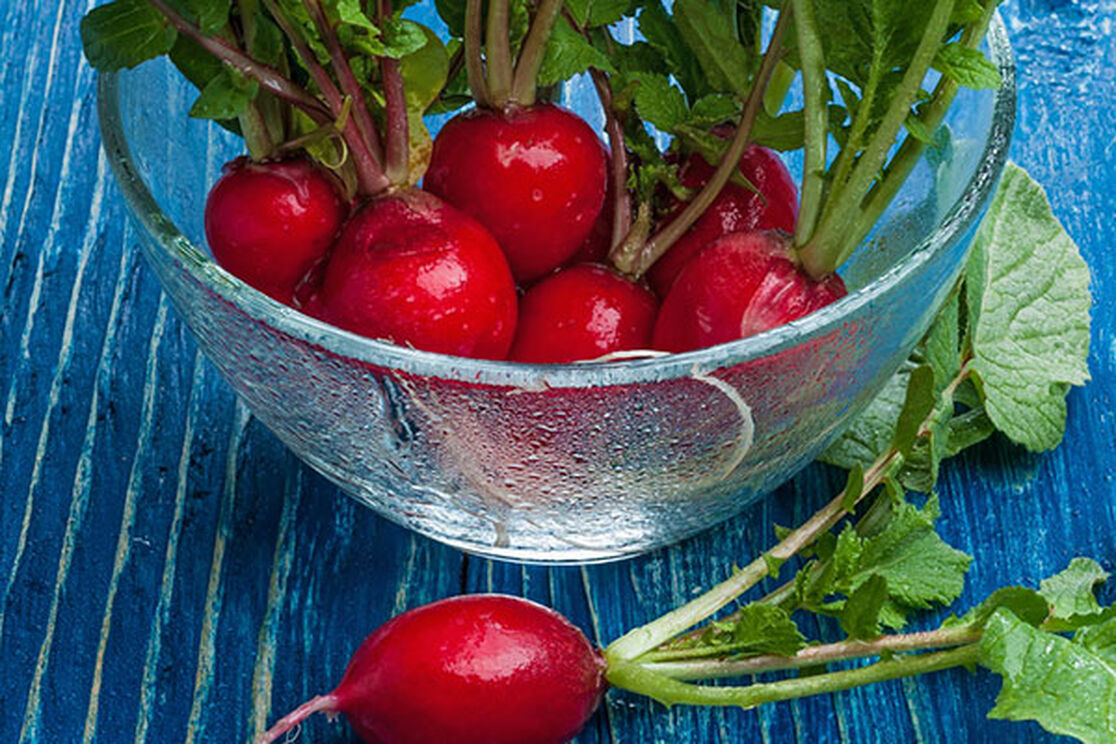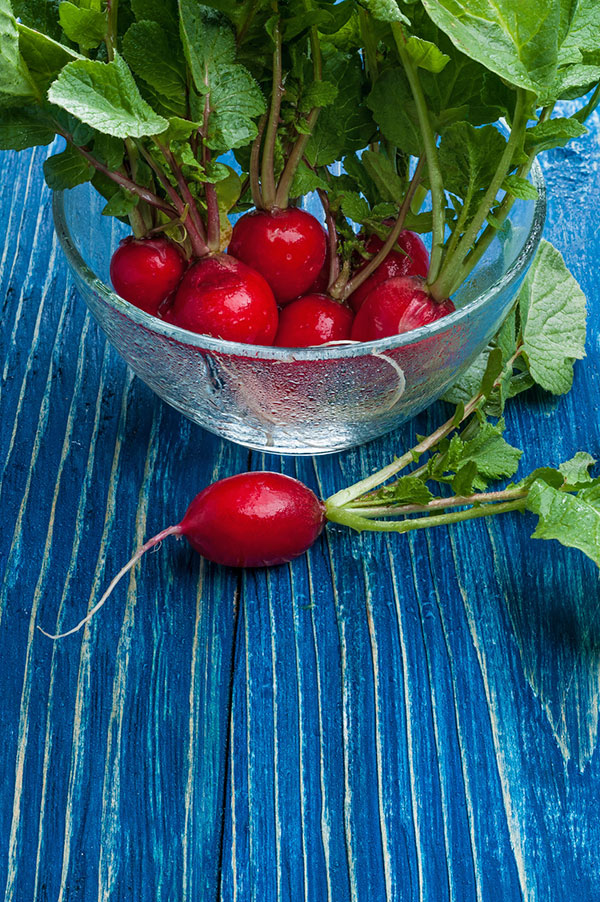Why Radishes?
Often an overlooked member of the veggie platter, the radish is not to be ignored. Adding more radishes to your diet could help you lower your blood pressure, cleanse your kidneys, and improve your hydration. Plus, their crisp, peppery taste and vibrant tint sets them apart from other root vegetables.
High in potassium, but low in sodium, radishes help to naturally regulate blood pressure which is essential for heart health. Radishes are also packed with vitamin C — 25% of the daily recommended value in just 100 grams — so they are beneficial to your body when it comes to reducing inflammation, rebuilding blood vessels, and retaining a healthy immune system.
Prone to winter colds or seasonal allergies? Radishes have anti-congestive properties, so they work to clear excess mucus in your sinuses to help you breathe easier. They are also naturally cooling, a benefit which is commonly used in Western medicine to decrease excess body heat, such as fever. Radishes work well as a disinfectant, so eating more radishes could help you lessen your chances of getting sick in the first place.
Beyond their nutritional benefits, radishes also have properties that makes them useful to treat skin irritations such as bug bites, bee stings, and acne. Radishes are antipruritic (that’s itch-inhibiting), so you can use them to soothe bug bites and reduce the urge to scratch. You can even try rubbing a piece of raw radish on your skin to take advantage of its natural cleansing properties.
Buying:
Radishes are available in grocery stores year-round. Look for small to medium, firm radishes that are free of blemishes. Their leaves should be green and unwilted. With radishes, smaller is better, as oversized radishes can be woody and pulpy.
If you have the yard space, radishes make a great gateway-to-gardening plant because they are a resilient and low maintenance crop with a quick turnover. This means that your kiddos will be able to see the fruits of their labor before losing interest — and they will love plucking them from the earth! Plant radishes in the late winter or early spring, about a month before the last expected frost.
Prepping:
If you are planning to enjoy the radish leaves as well as the root, use them right away; otherwise, the leaves will pull moisture from the root and result in a less-crisp veggie. Not ready to use your radishes? Simply chop off the green tops, then store in your refrigerator for up to a week. Always wash your radishes to remove dust and dirt.
Enjoy radishes raw, cooked, or pickled. Radishes make a zippy addition to anything from a garden salad to a creamy risotto to a fruit smoothie. Try our roasted radish recipe below for a whole new take on a simple side dish.
Simply Delicious Roasted Radishes
Ingredients
3 bunches radishes (with greens attached)
2 tablespoons olive oil
2 tablespoons unsalted butter
2 tablespoons fresh lemon juice
Ground salt and pepper to taste
Instructions
- Preheat oven to 500°. Trim radishes and wash greens; pat dry.
- In a large skillet, heat oil. Add radishes, season with salt and pepper, and cook over high heat for about 2 minutes. Stir occasionally, and remove when radishes become lightly browned in spots. Transfer the skillet to the oven and roast the radishes for 15 minutes, until crisp-tender.
- Return the skillet to the burner and stir in the butter to coat the radishes. Add the radish greens and cook over moderate heat for about 2 minutes, until they are wilted. Add lemon juice and season with salt. Serve roasted radishes right away.
Any radish fans out there? Let us know more ways to enjoy in the comments section below!
We aim to provide you with the most honest and credible information possible. This article was reviewed for accuracy by The Honest Team and was written based on sources that are linked at the bottom of the article.
blog_review_statement




